- Choosing the Right Cabbage Variety
- 1. Head Size
- 2. Maturity Time
- 3. Disease Resistance
- 4. Flavor and Texture
- 5. Climate Adaptability
- Preparing the Soil for Cabbage Planting
- 1. Clear the area
- 2. Loosen the soil
- 3. Add organic matter
- 4. Test the soil pH
- 5. Apply fertilizer
- 6. Level the soil
- 7. Water the soil
- Starting Cabbage Seeds Indoors
- Choose the Right Time
- Gather Supplies
- Sow the Seeds
- Provide Proper Care
- Transplanting
- Conclusion
- Transplanting Cabbage Seedlings to the Garden
- Caring for Cabbage Plants
- 1. Watering
- 2. Fertilizing
- 3. Mulching
- 4. Pest Control
- 5. Disease Prevention
- 6. Harvesting
- 7. Companion Planting
- Watering and Fertilizing Cabbage
- Watering
- Fertilizing
- Protecting Cabbage Plants from Pests and Diseases
- 1. Crop Rotation
- 2. Companion Planting
- 3. Manual Pest Control
- 4. Mulching
- 5. Watering
- 6. Pest Barriers
- 7. Disease-resistant Varieties
- Harvesting Cabbage at the Right Time
- 1. Check for maturity
- 2. Inspect the outer leaves
- 3. Feel the head of the cabbage
- 4. Use a sharp knife
- 5. Harvest early in the day
- “Question-Answer”
- When is the best time to plant cabbage seeds?
- What type of soil is best for growing cabbage?
- Can cabbage be grown in containers?
- How often should cabbage plants be watered?
- What are common pests and diseases that can affect cabbage plants?
- How long does it take for cabbage seeds to germinate?
- “Video” Growing Hydroponic Vegetable Garden at Home – Easy for Beginners
If you’re looking to grow cabbage in your vegetable garden, starting from seeds is a great way to ensure a successful harvest. Cabbage is a nutritious and versatile vegetable that can be enjoyed cooked or raw in a variety of dishes. Whether you’re a beginner or an experienced gardener, this planting and care guide will provide you with all the information you need to grow and care for cabbage plants from seeds.
When it comes to planting cabbage seeds, it’s important to choose the right location in your garden. Cabbage plants thrive in full sun, so select a spot that receives at least six hours of direct sunlight each day. Additionally, the soil should be well-drained and rich in organic matter. Before planting the seeds, prepare the soil by removing any weeds and loosening it with a garden fork or tiller.
Once the soil is prepared, it’s time to sow the cabbage seeds. Start by creating shallow furrows in the soil, spaced about 12 inches apart. Place the seeds about 1/4 inch deep in the furrows, with about 2-3 inches between each seed. Gently cover the seeds with soil and water thoroughly. It’s important to keep the soil consistently moist throughout the germination process.
Caring for cabbage plants is relatively easy. As the seedlings begin to emerge, it’s essential to thin them out to ensure proper spacing. Leave the strongest and healthiest seedlings, removing any weaker ones. Once the plants reach a height of about 4-6 inches, it’s time to transplant them to their final growing positions. Keep an eye out for pests and diseases, and use organic pest control methods if necessary. Regularly water the plants and provide them with a balanced fertilizer to promote healthy growth.
Choosing the Right Cabbage Variety
When it comes to choosing the right cabbage variety for your vegetable garden, there are several factors to consider. Different cabbage varieties have different characteristics and growing requirements, so it’s important to select one that suits your specific needs and preferences.
1. Head Size
One of the main considerations when choosing a cabbage variety is the desired head size. Cabbages can range from small, compact heads to large, full heads. If you prefer smaller cabbages, look for varieties like ‘Early Jersey Wakefield’ or ‘Greyhound’. For larger heads, consider varieties like ‘Late Flat Dutch’ or ‘Premium Late Flat Danish’.
2. Maturity Time
Another factor to consider is the maturity time of the cabbage variety. Some varieties mature earlier than others, which can be beneficial if you’re looking for a quicker harvest. Varieties like ‘Early Golden Acre’ or ‘Early Drumhead’ have a shorter maturity time, while ‘Late Flat Dutch’ or ‘Red Drumhead’ take longer to mature.
3. Disease Resistance
Disease resistance is also an important consideration when selecting a cabbage variety. Some varieties are more resistant to common cabbage diseases, such as clubroot or black rot, which can help ensure a healthier crop. Look for varieties that are labeled as disease-resistant, such as ‘Stonehead’ or ‘Caraflex’.
4. Flavor and Texture
Flavor and texture can vary among cabbage varieties, so it’s worth considering your preferences in this regard. Some varieties have a sweeter taste and tender leaves, while others have a stronger flavor and firm texture. ‘Michihili’ or ‘Chinese Napa’ cabbage, for example, have a milder flavor and crispy texture, while ‘January King’ or ‘Savoy’ cabbage have a more robust flavor and crinkled leaves.
5. Climate Adaptability
Finally, consider the climate in your area and choose a cabbage variety that is well-suited to your specific conditions. Some varieties are more cold-hardy, making them ideal for cooler regions, while others are better adapted to warmer climates. Check the recommended growing zones for each variety to ensure it will thrive in your garden.
By considering factors such as head size, maturity time, disease resistance, flavor and texture, and climate adaptability, you can choose the right cabbage variety that will thrive in your vegetable garden and meet your specific needs and preferences.
Preparing the Soil for Cabbage Planting
Before planting cabbage seeds, it is important to prepare the soil to ensure optimal growth and yield. The soil should be well-draining, rich in organic matter, and have a pH level between 6.5 and 7.5. Follow these steps to prepare the soil for cabbage planting:
1. Clear the area
Start by clearing the planting area of any weeds, rocks, or debris. Remove any large stones or roots that could hinder root growth.
2. Loosen the soil
Use a garden fork or a tiller to loosen the soil to a depth of at least 12 inches (30 cm). This will provide the cabbage plants with a loose and well-aerated growing medium.
3. Add organic matter
Incorporate organic matter such as compost or well-rotted manure into the soil. This will improve its fertility, drainage, and moisture retention capabilities. Spread a 2-3 inch (5-7.5 cm) layer of organic matter over the planting area and mix it into the topsoil.
4. Test the soil pH
It is essential to test the soil’s pH level, as cabbage prefers a slightly acidic to neutral soil. Use a soil testing kit or send a soil sample to a local agricultural extension office for analysis. If the pH is too low, add lime to raise it. If the pH is too high, add sulfur or peat moss to lower it.
5. Apply fertilizer
Based on the soil test results, apply a balanced fertilizer with a higher nitrogen content. Follow the recommended application rates and incorporate the fertilizer into the soil prior to planting.
6. Level the soil
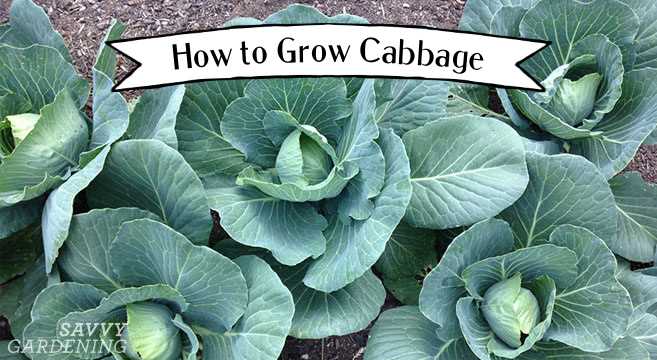
Rake the soil to level it and remove any large clumps or stones. A smooth and level surface will make planting easier and ensure consistent growth.
7. Water the soil
Water the prepared soil thoroughly to ensure proper moisture levels. This will help the cabbage seeds germinate quickly and establish strong root systems.
By following these steps to prepare the soil, you will create an ideal growing environment for your cabbage plants. This will promote healthy growth, better disease resistance, and maximum yield.
Starting Cabbage Seeds Indoors
Starting cabbage seeds indoors is an effective way to get a head start on your vegetable garden. By sowing seeds indoors, you can control the growing conditions and ensure that your cabbage plants have a strong start before they are transplanted outside.
Choose the Right Time
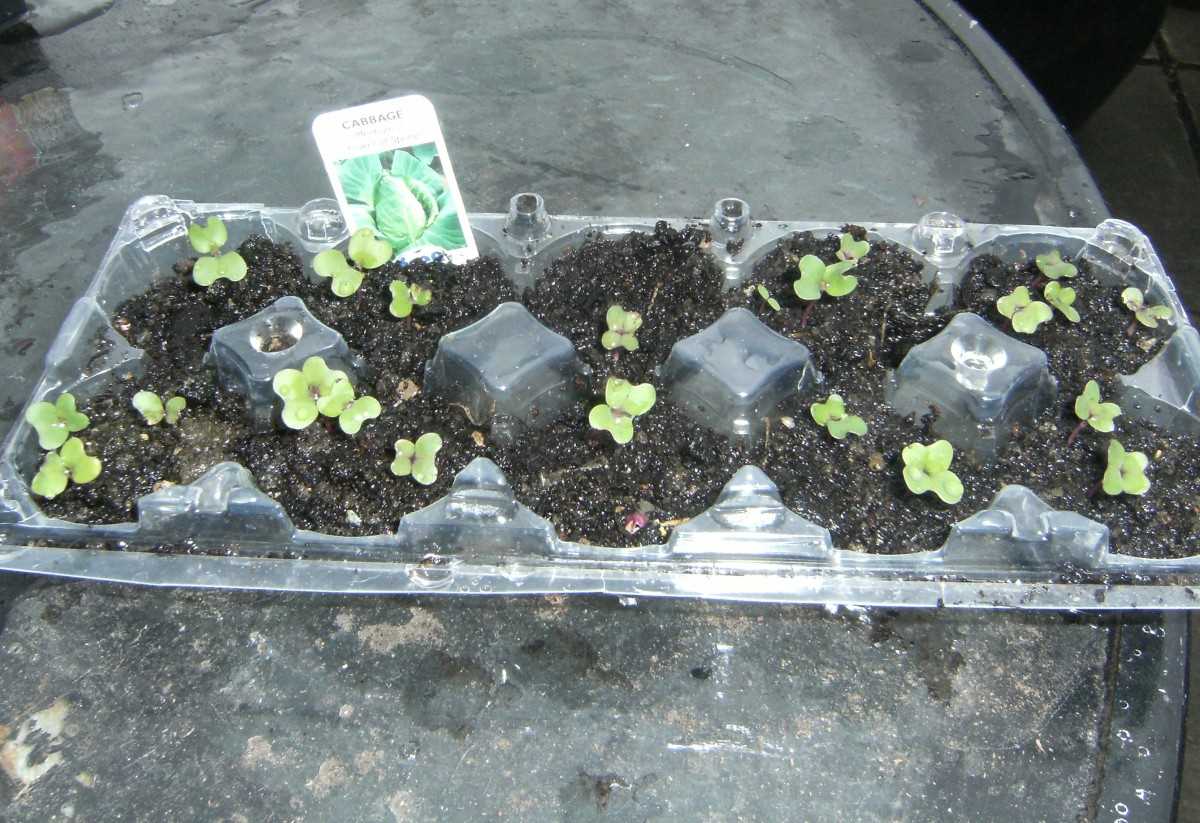
Before starting cabbage seeds indoors, it is important to choose the right time to sow. Cabbage is a cool-season crop and prefers cooler temperatures for germination and early growth. Start your cabbage seeds indoors 6-8 weeks before the last frost date in your area.
Gather Supplies
Before sowing cabbage seeds indoors, gather the necessary supplies:
- Seed tray or containers
- Seed starting mix
- Cabbage seeds
- Watering can or spray bottle
- Labels
Sow the Seeds
Fill the seed tray or containers with a moist seed starting mix. Make small depressions in the mix, about ¼ inch deep. Place one cabbage seed in each depression and cover lightly with the seed starting mix. Gently firm the soil over the seeds.
Provide Proper Care
After sowing the cabbage seeds, provide them with proper care to promote healthy growth:
- Place the seed tray or containers in a warm location, such as a sunny windowsill or under a grow light.
- Keep the soil moist but not waterlogged. Check the moisture level regularly and water as needed.
- Provide good air circulation to prevent damping off disease by using a fan or by opening a window.
- Once the seeds have germinated, remove any weak or overcrowded seedlings to allow the remaining ones to grow stronger.
Transplanting
When the cabbage seedlings have developed their second or third set of true leaves and the weather has warmed up, they are ready to be transplanted outdoors. Harden off the seedlings by gradually exposing them to outdoor conditions for a few hours each day.
Conclusion
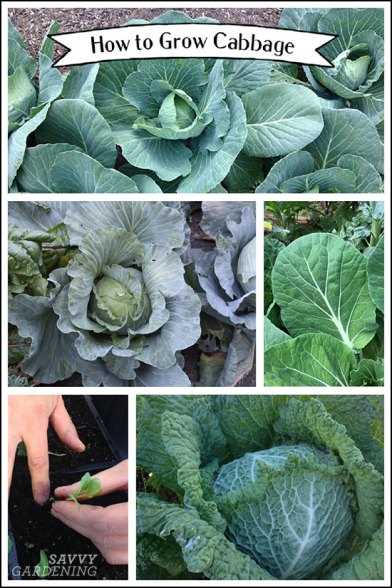
Starting cabbage seeds indoors is a rewarding and effective way to ensure the success of your cabbage plants. By following these steps and providing proper care, you can grow healthy and robust cabbage plants that will thrive in your vegetable garden.
Transplanting Cabbage Seedlings to the Garden
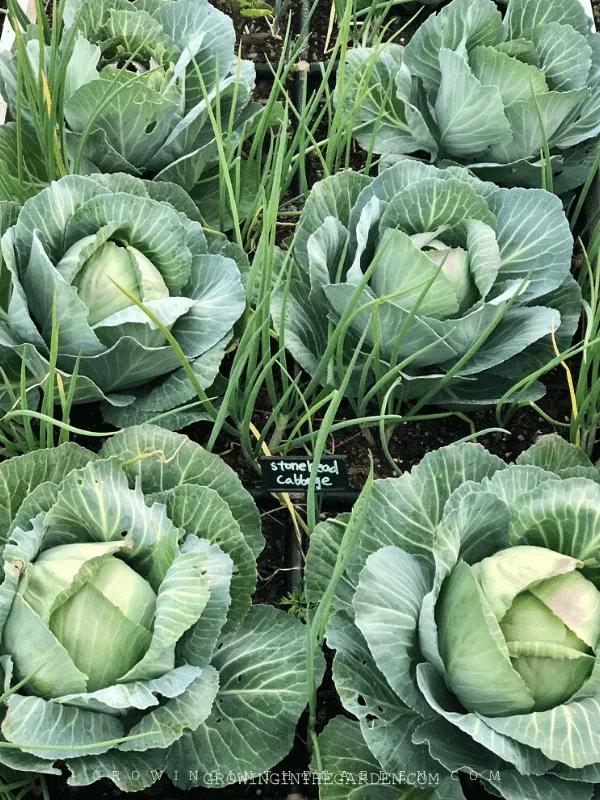
Transplanting cabbage seedlings from indoor containers to the garden is an important step in the growing process. It ensures that the young plants have plenty of room to grow and develop, and sets them up for success in the outdoor environment. Follow these steps to correctly transplant your cabbage seedlings:
- Choose the right time: Wait until the soil in your garden has warmed up to around 50-60°F (10-15°C) before transplanting your cabbage seedlings. This is usually a few weeks after the last frost date in your area.
- Prepare the soil: Loosen the soil in your garden bed and remove any weeds or debris. Cabbage prefers well-draining soil that is rich in organic matter.
- Dig a hole: Using a hand trowel or garden shovel, dig a hole in the garden bed that is slightly larger than the root ball of the cabbage seedling.
- Transplant the seedling: Gently remove the cabbage seedling from its container, being careful not to damage the roots. Place the root ball into the prepared hole and fill in the soil around it, pressing gently to secure the plant.
- Space the seedlings: Cabbage plants should be spaced 12-24 inches (30-60 cm) apart to allow for proper growth and air circulation. Make sure to leave enough space between each transplant.
- Water the transplants: After transplanting, water the cabbage seedlings thoroughly to help them settle into their new environment. Be careful not to overwater, as cabbage plants do not like excessive moisture.
- Protect the transplants: To protect the young cabbage plants from pests and harsh weather conditions, you can use row covers or other protective measures.
- Monitor and care for the transplants: Keep an eye on your transplanted cabbage seedlings and provide them with regular care. This includes regular watering, fertilizing as needed, and addressing any pest or disease issues that may arise.
Following these steps will help ensure a successful transplant of your cabbage seedlings to the garden. With proper care and attention, your cabbage plants will thrive and produce a bountiful harvest.
Caring for Cabbage Plants
Once your cabbage seedlings have been planted in the garden, it’s important to provide them with the proper care to ensure healthy and strong growth. Here are some tips on how to care for your cabbage plants:
1. Watering
Cabbage plants require consistent moisture to thrive. Water them deeply and regularly, making sure the soil is evenly moist. Avoid over-watering, as this can lead to root rot. It’s best to water cabbage plants at the base to avoid wetting the leaves, which can promote fungal diseases.
2. Fertilizing
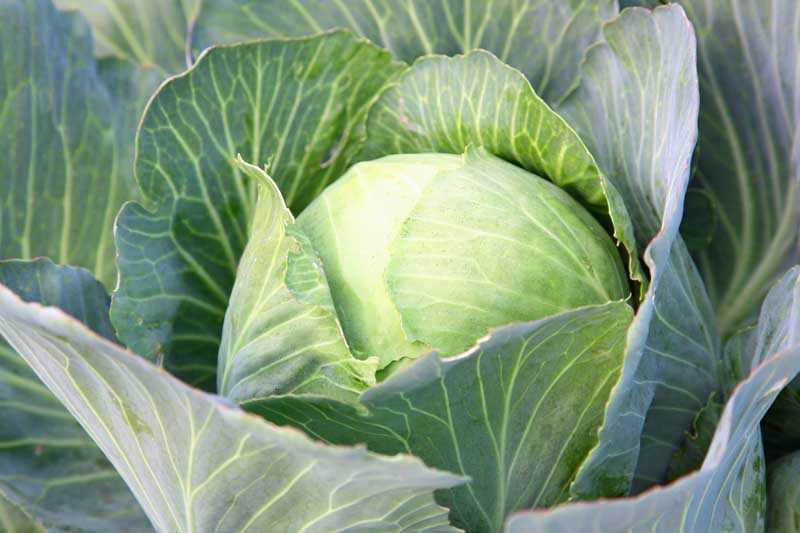
Apply a balanced fertilizer, such as a 10-10-10 formula, when your cabbage plants are around four weeks old. Follow the instructions on the fertilizer package for application rates. It’s important not to over-fertilize, as this can lead to excessive leaf growth and poor head development.
3. Mulching
Applying a layer of mulch around your cabbage plants can help conserve moisture, suppress weed growth, and maintain an even soil temperature. Use organic mulch, such as straw or shredded leaves, and apply it in a layer about 2-3 inches thick.
4. Pest Control
Cabbage plants are susceptible to a variety of pests, including cabbage worms, aphids, and cabbage loopers. Regularly inspect your plants for any signs of pest damage, such as chewed leaves or sticky residue. If you notice pests, consider using organic pest control methods, such as handpicking, insecticidal soap, or neem oil.
5. Disease Prevention
Several diseases can affect cabbage plants, such as clubroot and blackleg. To prevent these diseases, practice crop rotation and avoid planting cabbage in the same location every year. Additionally, remove any infected plants promptly to prevent the spread of disease.
6. Harvesting
Cabbage heads are ready for harvest when they have reached the desired size and are firm to the touch. Use a sharp knife to cut the heads at the base, leaving a few outer leaves intact. After harvesting, store the cabbage heads in a cool and dark place, such as a root cellar or refrigerator, for extended shelf life.
7. Companion Planting
Consider companion planting cabbage with beneficial plants that can help deter pests and improve growth. Good companions for cabbage include herbs like dill or thyme, as well as plants from the allium family, such as onions and garlic.
| Task | Timing |
|---|---|
| Watering | Consistently and deeply |
| Fertilizing | Around four weeks after planting |
| Mulching | After planting and when soil is moist |
| Pest Control | Regularly inspect and take action as needed |
| Disease Prevention | Practice crop rotation and promptly remove infected plants |
| Harvesting | When heads are firm and desired size is reached |
| Companion Planting | Plant alongside beneficial herbs and alliums |
Watering and Fertilizing Cabbage
Proper watering and fertilizing are essential for the healthy growth and development of cabbage plants. Here are some guidelines to help you ensure your cabbage plants receive the right amount of water and nutrients.
Watering
Cabbage plants require regular and consistent watering to thrive. Here are some tips for watering your cabbage:
- Water your cabbage plants deeply, aiming for at least one inch of water per week.
- Provide water to the plants’ root zone, rather than just wetting the leaves. This can be done through drip irrigation or watering at the base of the plants.
- Avoid overhead watering, as it can increase the risk of fungal diseases.
- Water your cabbage plants in the morning to allow the leaves to dry before evening, reducing the risk of disease.
- Monitor soil moisture levels and adjust your watering schedule accordingly. The soil should be moist but not waterlogged.
Fertilizing
Cabbage plants benefit from regular feeding to encourage healthy growth and maximize yields. Here are some recommendations for fertilizing cabbage:
- Before planting, incorporate a balanced fertilizer into the soil according to the package instructions.
- Side-dress your cabbage plants with nitrogen-rich fertilizer when they reach the mid-growth stage. Apply the fertilizer evenly around the plants, keeping it about six inches away from the stems.
- Use organic fertilizers, such as compost or well-rotted manure, for a slow-release source of nutrients.
- Avoid excessive nitrogen fertilization, as it can lead to lush foliage at the expense of cabbage heads.
- Monitor the health and growth of your cabbage plants and adjust your fertilization schedule as needed.
Remember, proper watering and fertilizing practices will help ensure your cabbage plants grow vigorously and produce tasty and healthy heads. Regular monitoring and adjustments based on the specific needs of your plants will lead to a bountiful cabbage harvest.
Protecting Cabbage Plants from Pests and Diseases
Cabbage plants are susceptible to various pests and diseases that can damage or even destroy your crop. However, with proper care and a few preventive measures, you can minimize the risk and protect your cabbage plants. Here are some strategies to keep your cabbage plants healthy:
1. Crop Rotation
Rotate your cabbage crop each year to avoid a buildup of pests and diseases in the soil. Do not plant cabbage or other brassicas in the same spot for at least three years. This will help to break the lifecycle of common cabbage pests and reduce the risk of plant diseases.
2. Companion Planting
Planting certain companion plants near your cabbage can help repel pests or attract beneficial insects. For example, planting aromatic herbs like thyme or sage can repel cabbage moths. Marigolds and nasturtiums can repel aphids and other pests. On the other hand, planting flowers like dill, fennel, or Queen Anne’s lace can attract beneficial insects like ladybugs and lacewings, which feed on cabbage pests.
3. Manual Pest Control
Inspect your cabbage plants regularly and remove any pests you find by hand. This can include caterpillars, slugs, aphids, or other insects. If the infestation is severe, consider using insecticidal soap or other organic pest control methods.
4. Mulching
Apply a layer of mulch around your cabbage plants to help suppress weeds and reduce the risk of soil-borne diseases. Mulch also helps to retain moisture in the soil, promoting healthy plant growth.
5. Watering
Proper watering is essential for cabbage plant health. Be careful not to overwater, as this can lead to fungal diseases such as clubroot. Water deeply when necessary, allowing the top inch of soil to dry out before watering again. It’s best to water at the base of the plants to avoid wetting the leaves, which can also increase the risk of disease.
6. Pest Barriers
Protect your cabbage plants from common pests like cabbage worms or snails by using physical barriers such as netting or row covers. These barriers can prevent pests from reaching your plants while still allowing air, light, and water to reach them.
7. Disease-resistant Varieties
Consider planting disease-resistant cabbage varieties. These varieties are bred to have improved resistance to specific diseases, reducing the risk of infection. Check the seed packets or consult with a knowledgeable supplier to find varieties that are resistant to common cabbage diseases in your region.
By implementing these strategies and staying vigilant, you can protect your cabbage plants from the most common pests and diseases, ensuring a healthy and productive crop.
Harvesting Cabbage at the Right Time
Harvesting cabbage at the right time is crucial to ensure that you get the best flavor and texture from your homegrown vegetables. Here are some key steps to follow when it comes to harvesting cabbage:
1. Check for maturity
Before harvesting cabbage, it is important to check for maturity. Cabbage typically takes about 70 to 80 days from the date of planting to reach maturity, depending on the variety. You can check the maturity by examining the size and firmness of the head. Ideally, the head should be firm and dense.
2. Inspect the outer leaves
Inspect the outer leaves of the cabbage plant to see if they are starting to yellow or wilt. This is a good indication that the cabbage is ready for harvest. However, if the outer leaves are still healthy and green, you may need to wait a little longer before harvesting.
3. Feel the head of the cabbage
Gently squeeze the head of the cabbage to check for firmness. It should feel solid and firm, indicating that it is ready to be harvested. Avoid harvesting cabbage with heads that feel soft or spongy.
4. Use a sharp knife
When harvesting cabbage, use a sharp knife to cut the head from the base of the plant. Make a clean and smooth cut, while also leaving a few outer leaves intact to protect the head during storage.
5. Harvest early in the day
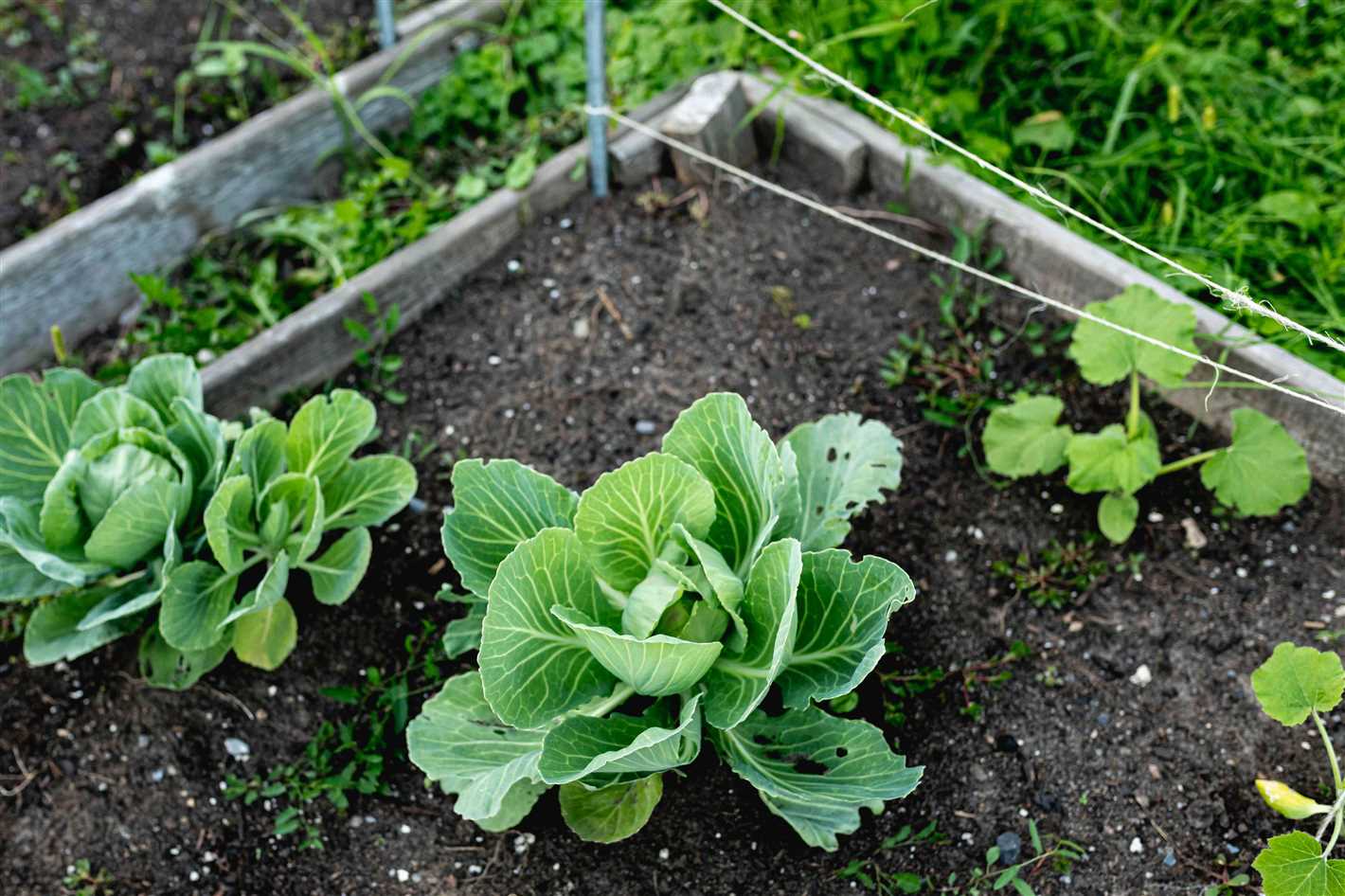
It is best to harvest cabbage early in the day when temperatures are cooler. This helps to preserve the freshness and crispness of the cabbage head. Avoid harvesting cabbage during hot and sunny periods, as this can reduce the quality and flavor of the harvested heads.
By following these steps, you can ensure that you harvest cabbage at the right time, resulting in delicious and healthy homegrown vegetables for your table.
“Question-Answer”
When is the best time to plant cabbage seeds?
The best time to plant cabbage seeds is 4-6 weeks before the last frost date in your area.
What type of soil is best for growing cabbage?
Cabbage grows best in well-drained soil that is rich in organic matter and has a pH level between 6.0 and 6.8.
Can cabbage be grown in containers?
Yes, cabbage can be grown in containers as long as the container is at least 12 inches deep and has good drainage.
How often should cabbage plants be watered?
Cabbage plants should be watered regularly, about 1-1.5 inches of water per week. It is important to keep the soil consistently moist but not waterlogged.
What are common pests and diseases that can affect cabbage plants?
Common pests that can affect cabbage plants include aphids, cabbage worms, and flea beetles. Diseases that can affect cabbage plants include black rot, clubroot, and downy mildew.
How long does it take for cabbage seeds to germinate?
Cabbage seeds typically germinate within 7-10 days when the soil temperature is around 70-75°F (21-24°C).







